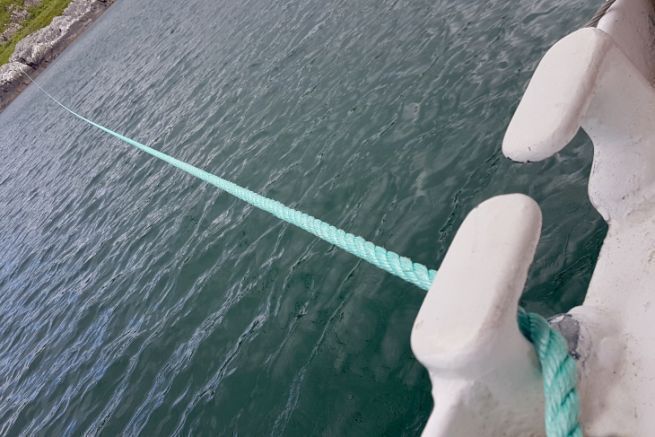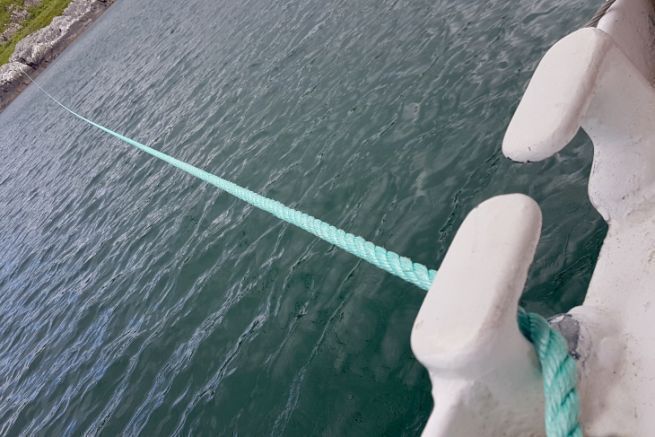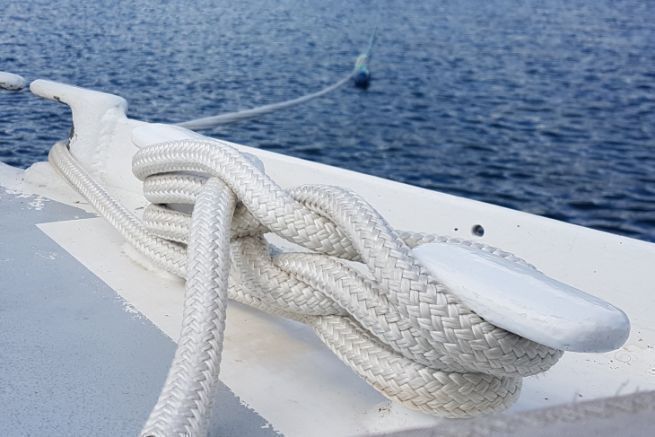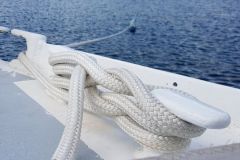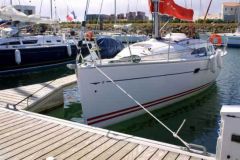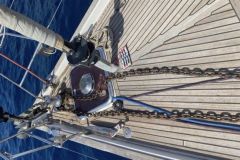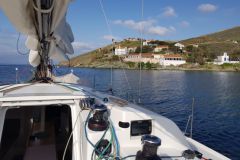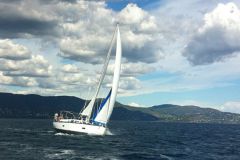In what situations should you strike one (or more) mooring lines at the shore?
There can be several reasons for mooring at the coast: the impossibility of dropping an anchor, a narrow anchorage in which the boat must be immobilized, or for ecological considerations. In our case, we are anchored in a beautiful Scottish bay and want to face the swell for our comfort. We will strike a mooring line to the shore to accommodate this need.
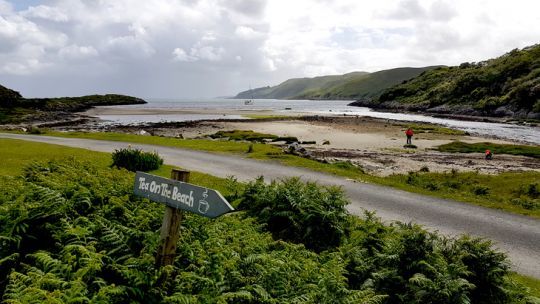
It is important to note that only the main mooring should be used to ensure the safety of the boat and crew. Our mooring line must not support a tension greater than that of the main mooring. Moreover, it must be possible to remove it at any time without danger.
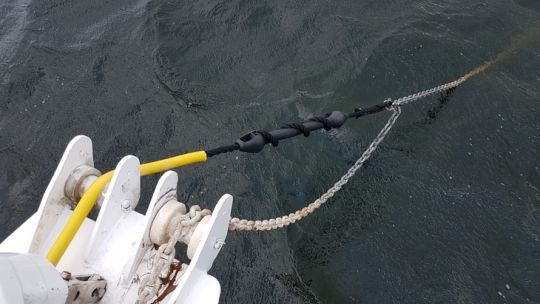
A particular case is that of an "anchorless mooring". In this situation, multiplying the moorings on the coast allows to distribute the efforts. This configuration may require a lot of work and would deserve a dedicated development.
Choose and prepare mooring equipment
The first step is to choose a suitable mooring line. For our 15m and 18 tons boat, a 100m polypropylene model with a 14mm diameter is sufficient. Experience shows that a larger section is not really useful, except for adding weight. It will simply be necessary to avoid the risks of chafing.
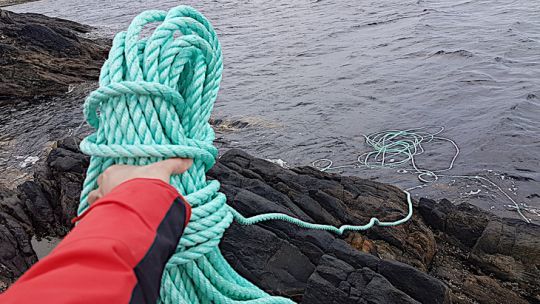
The advantages of polypropylene over nylon are its lightness, waterproofing, cost and buoyancy. This last characteristic makes it visible to other boats and facilitates its handling. In addition, we take a steel or stainless steel cable (or better, a small chain), the dinghy with its mooring and a small piece of rope. Optionally, one or more grapples, a large shackle and small fenders.
Docking on a rocky coast
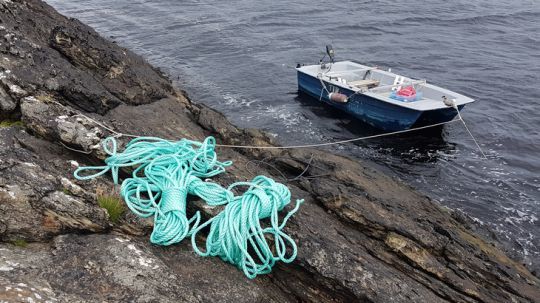
In our case, the shoreline is made of steep rocks and the swell does not allow to moor the dinghy. The trick is to drop the anchor at about 3-4 meters from the shore, then to use the motor to approach the shore (we are downwind). Once on land we hit the small end and unload our equipment.
Choosing a mooring point
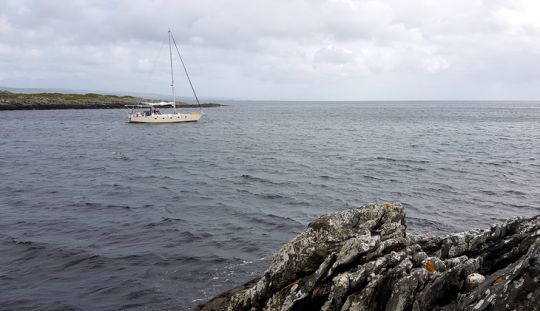
Once on land, we go to the place where the mooring line is to be struck to choose an anchor point. Ideally a rocky appendage that is solid enough and slightly high. This point should not be submerged at high tide, as it would be less safe and more difficult to access.
Strike the mooring line and bring it back to the boat
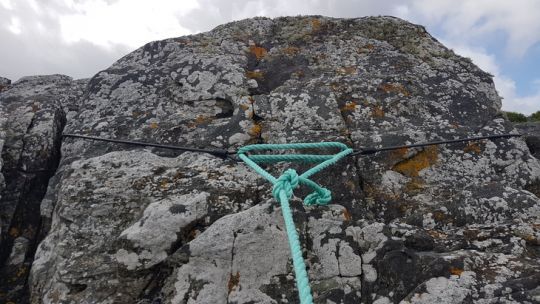
Never wrap the mooring line directly around the rock bitt. The steel cable (or small chain) will be more resistant to the sharp edges of the rock. Ideally, you should make a dead turn to limit chafing and grip the rock, then strike the tether to the cable with the large shackle. In our example, the rope is too short to make a dead turn and use the shackle, but sufficient to wrap around the rock and tie the rope to it.
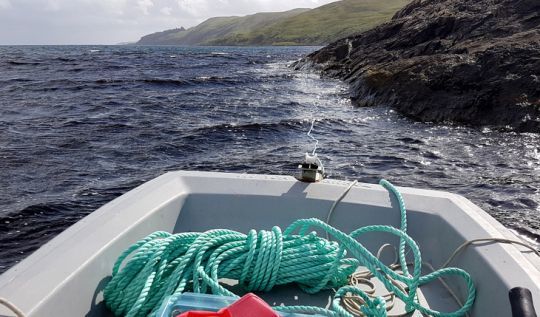
As our mooring line floats, we can easily bring it back to the dinghy, then its free end to the boat. We have about 70-80m to go. In spite of the wind, this is done without difficulty. Having a margin is useful to facilitate the operation and then proceed to the adjustments on the boat.
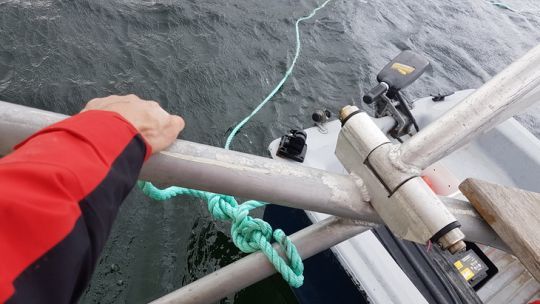

 /
/ 